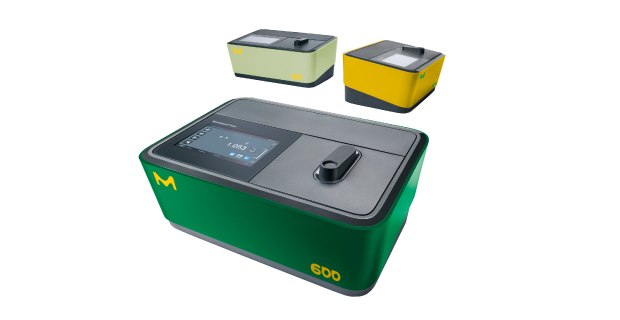Surfactants (nonionic) in Extran® Rinse Solutions

Sample preparation and photometric determination of nonionic surfactants in Extran® rinse solutions (MA 01, MA 02, MA 05, AP 22)
Introduction
Many facilities are required to prove residue-free cleanliness of their lab equipment because any residues that remain after cleaning could affect the accuracy of analytical results. Extran® detergent can be used in such situations because it can provide residue-free cleaning and equipment can be tested for residues by a straightforward photometric test. Here we describe a procedure to analyze Extran® rinse solutions for residual detergent using the Spectroquant® Surfactants (nonionic) Cell Test Kit.
For further information on Extran® detergents please have a look at the brochure “Cleaner – Extran® Detergents – The perfect solution for cleaning your laboratory utensils” at www.SigmaAldrich.com/cleaning.
Experimental Method: Nonionic Surfactant Analysis
Nonionic surfactants (ethoxylates with 3 to 20 ether bridges) react with an indicator (TBPE) to form a complex that is then extracted with dichloromethane. The green color of the organic phase is determined photometrically.
Measuring Range
0.10 - 7.50mg/L Triton® X-100
Applicable Sample
Extran® detergent rinse solutions
Reagents, Instruments, and Materials
Test/Reagents Kit(s)
For the measurement the following Spectroquant® test kit is necessary:
- Surfactants (nonion.) Cell Test Method: photometric 0.10 - 7.50 mg/L Triton® X-100 Spectroquant® (1.01787)
Instrument(s) & Devices
For the measurement one of the following Spectroquant® photometers is necessary (bold used for the development of this application note):
- Spectroquant® VIS Spectrophotometer Prove 100 (173016)
- Spectroquant® UV/VIS Spectrophotometer Prove 300 (173017)
- Spectroquant® UV/VIS Spectrophotometer Prove 600 (173018)
- Spectroquant® Photometer NOVA 30 (1.09748)
- Spectroquant® Photometer NOVA 60 (1.09751)
- Spectroquant® Photometer NOVA 60A (1.09752)
- Spectroquant® Colorimeter Move 100 (1.73632)
Software for Data transfer
- Optional Spectroquant® Prove Connect to LIMS software package (Y.11086) to transfer your data into an existing LIMS system.
Other Reagents and Accessories
- Triton® X-100 (1.12298)
- Water for analysis (1.16754)
- Swabs for taking samples from planar surfaces (like e.g., large Alpha® Swab TX 417 A from ITW Texwipe®)
Experimental Procedure
Sample Preparation
The sampling procedure depends on the material of the surface that is to be analyzed for residues:
- Non-planar surfaces (e.g., sieves or process seals) are rinsed with water for analysis and the rinse solution is collected. This solution can be analyzed directly.
- Swabs are used for taking samples from planar surfaces. Both adsorptive sides of the swab are soaked with 0.25 mL of water for analysis and the surface that is to be analyzed is wiped using both sides of the swab. The direction of wiping is changed at least once by wiping perpendicular to the previous direction. The swabs are then extracted with water for analysis. The surface area analyzed, and the volume of water used for swab extraction is defined by the desired limit of detection (large surface area + small volume of water = high detectability). Typical is a surface area of 400 cm2 and swab extraction with 10 mL of water for analysis. The thus received solution (sample) can be analyzed with the above Spectroquant® Cell Test. The obtained sample must be free of organic solvents (e.g., ethanol) as these may interfere with the Spectroquant® Cell Test. The sample must be clear. If necessary, filter through a paper or a membrane filter. Dilute the sample, if needed into the measuring range (0.10 - 7.50 mg/L) of the Spectroquant® Cell Test with water for analysis. If needed, adjust pH into the range of 3–9.
Measurement
The method for analyzing surfactants (nonionic) is pre-calibrated in our most current and old photometers. Programming data for other manufacturer’s spectrophotometers are available at http://www.sigmaaldrich.com.
For the nonionic surfactant analysis, 16-mm round cells must be used. For the verification of the handling, a Triton® X-100 Standard (reference substance for nonionic surfactants) is recommended. Detailed information on the preparation of standard solution can be found in the application "AQA Standard nonionic surfactants". Alternatively, this information can be found also in the manuals of the above-provided photometers.
Follow the instructions for use of the cell test. A clear phase separation must occur within the reaction time. An emulsion indicates too high Extran® concentrations in the tested sample.
Notes on the measurement
This application gives an example of a possible procedure for cleaning validation. Nonionic surfactants adhere to most surfaces relatively well. This is the reason that it is essential to assure the absence of those substances. Ionic surfactants and phosphates are much easier to remove from the cleaning system by rinsing with water for analysis. Therefore, the absence of those substances doesn’t indicate the conclusion that the nonionic surfactants are not present. For this, it is essential to implement the sample preparation step before analysis. For the analysis system used, the method must be validated against a reference system in accordance with the current regulatory requirements (e.g., GMP, cGMP).
Analytical quality assurance
Analytical quality assurance (AQA) is recommended before each measurement series.
Calculation

For more information visit us at SigmaAldrich.com/photometry
Related Products
如要继续阅读,请登录或创建帐户。
暂无帐户?